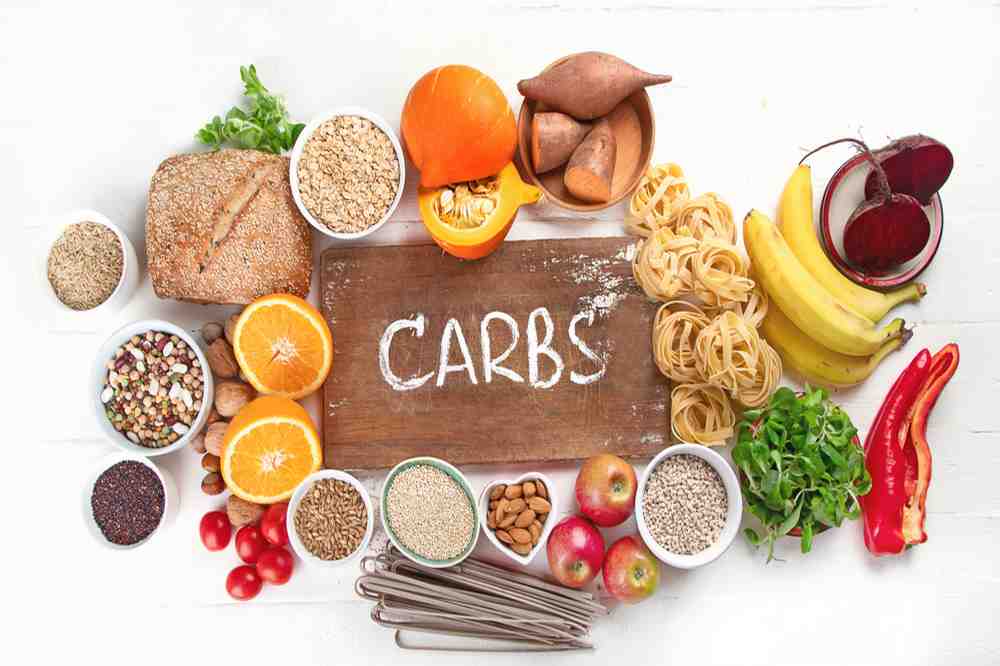Carbohydrates are molecules of sugar. Along with fats and proteins, carbohydrates are one of the main nutrients present in drinks and foods. The human body converts carbohydrates into glucose. Blood sugar or Glucose is the main energy source for your body’s tissues, cells, and organs. Glucose utilizes immediately or stores in the muscles and liver for later use. Carbohydrate is a class of compounds that are naturally occurring and form their derivatives. In the early 19th century, substances like starch, linen, and wood were present to be mainly composed of molecules consisting of atoms of Hydrogen (H), carbon (C), and oxygen (O).The general formula of carbohydrates is C6H12O6; other natural molecules having similar formulas present to have the same ratio of oxygen to hydrogen. Carbohydrates are likely the most widespread and abundant natural substances in nature, and they are necessary components of all living things. Carbohydrates are made by green plants from water and carbon dioxide during the photosynthesis process. Carbohydrates offer essential structural constituents and energy sources in organisms. In addition, the form of the structure of nucleic acids that consist of genetic information contains carbohydrates.
Carbohydrates are a form of building blocks of sugars. It can be categorized according to many sugar units combines in their molecule. Fructose, glucose, and galactose are examples of single-unit sugars, which are known as monosaccharides. While, double-unit sugars are known as disaccharides, between which lactose (milk sugar) and sucrose (table sugar) are most commonly known. Disaccharides and Monosaccharides are mostly referred to as simple carbohydrates. Long-chain molecules like dietary fibers and starches are familiar as complex carbohydrates. Though, there are more clear differences.
The “carbohydrate” word was created more than 100 years ago to define a huge group of substances of the general formula Cn(H2O)n. While the part of carbohydrates in metabolism (cellular) involves a huge variety of cellular functions consisting of cell adhesion, immune recognition, protein folding, and enzyme activity. The chief part of the carbon cycle appears as carbon dioxide converts to carbohydrates through the process of photosynthesis. Carbohydrates utilizing by humans and animals in metabolism to make other compounds and energy.
The formula of Carbohydrate Cx(H2O)y commonly utilized to represent various carbohydrates, which means “watered carbon.” Carbohydrate chemistry most similarly resembles that of aldehyde, ketone, and alcohol functional groups. As a result, the current definition of Carbohydrate is that substances such as aldehydes, ketones, or polyhydroxy. The carbohydrate chemistry is so complex in the fact that there is an alcohol functional group on every carbon almost. Additionally, the carbohydrate may appear in a straight-chain either or a ring structure. Ring structures link two functional groups additionally: the acetal and hemiacetal.
Recent studies of glycobiology or carbohydrates are a complex rule that permeates diverse fields as microbiology, molecular biology, cell biology, and enzymology. Histochemical techniques for the characterization and detection of carbohydrate-containing macromolecules (glycoconjugates) and carbohydrates are common operations in the laboratory of histology. These techniques sometimes offer invaluable information which may help the pathologist in characterizing and diagnosing many pathological conditions such as autoimmune disorders, neoplasia, infectious diseases, and inflammation. Carbohydrates are also familiar names, which mostly refer to particular groups of carbohydrates such as probiotics, resistant starch, sugars, added and intrinsic sugars, simple and complex carbohydrates.
https://www.sciencedirect.com/topics/medicine-and-dentistry/carbohydrate
https://www.britannica.com/science/carbohydrate

